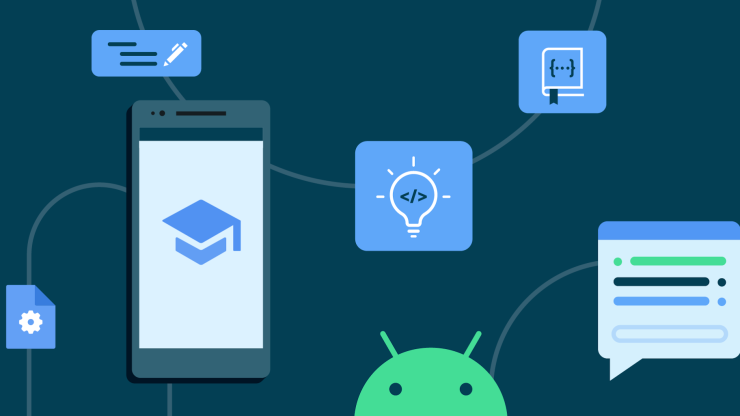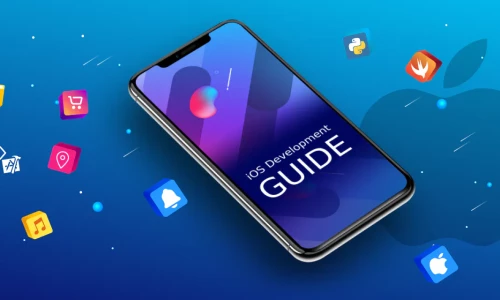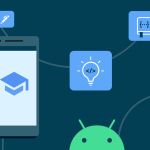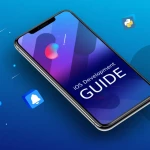Top 50 Android Development Interview Questions Asked in Pakistan

-

Nouman Awan
-
Aug 19, 2023
-
139
The world of Android development has witnessed exponential growth, and Pakistan is no stranger to this phenomenon. With a burgeoning community of tech enthusiasts and aspiring developers, a multitude of challenging questions arise in the realm of Android development. This article aims to address the top 50 challenging Android development questions frequently posed in Pakistan, shedding light on areas where developers often seek clarity.
What is Android Development? Android development refers to the process of creating applications for the Android operating system.
Which Programming Languages are Used for Android Development? The primary programming languages for Android development are Java and Kotlin.
What is Android Studio? Android Studio is the official integrated development environment (IDE) for Android app development.
How Do I Set Up Android Studio for App Development? To set up Android Studio, follow these steps:
- Download and install Android Studio.
- Install the Android SDK and necessary tools.
- Create a new Android project.
What is an Activity in Android? An Activity represents a single user interface screen or window in an Android app.
What is Fragment in Android? A Fragment is a modular section of an Activity, allowing for flexible UI composition.
What is the Android Manifest File? The AndroidManifest.xml file contains essential information about the app, such as permissions, activities, and services.
How Do I Handle Different Screen Sizes and Resolutions in Android? To handle various screen sizes, use layout resources and responsive design techniques.
What is RecyclerView? RecyclerView is a flexible and efficient way to display lists and grids in Android apps.
What is the Android Application Lifecycle? The Android application lifecycle consists of seven stages: onCreate, onStart, onResume, onPause, onStop, onDestroy, and onRestart.
What is SQLite and How is it Used in Android? SQLite is a lightweight, embedded relational database used for data storage in Android apps.
How Do I Implement Networking in Android Apps? Implement networking using HTTP libraries like Retrofit, OkHttp, or Volley to make network requests.
What is Retrofit? Retrofit is a popular HTTP client library for Android that simplifies network communication.
What are Content Providers? Content Providers allow apps to share data and access data from other apps.
How Do I Implement Permissions in Android Apps? Request and handle runtime permissions using the PackagingManager and the Permission API.
What is Material Design? Material Design is Google's design language for creating visually appealing and consistent Android apps.
How Do I Implement Navigation in Android Apps? Implement navigation using the Navigation Component, which offers simplified navigation graph creation.
What is Android Data Binding? Android Data Binding is a library that connects UI components to data sources, streamlining UI updates.
How Do I Implement Push Notifications in Android? Implement push notifications using Firebase Cloud Messaging (FCM) by integrating the Firebase SDK.
What is Dependency Injection in Android? Dependency Injection is a design pattern that allows you to inject dependencies into classes, enhancing code maintainability.
How Do You Implement Custom Views with Touch Interaction in Android? To implement custom views with touch interaction, extend the View class and override touch event methods.
Discuss Android Security Architecture and Measures to Prevent Reverse Engineering. Android security involves secure coding practices, encryption, obfuscation, and secure storage.
What is Android ConstraintLayout? How Does it Compare to Other Layouts? ConstraintLayout is a flexible layout manager that simplifies complex layouts. It offers advanced features like constraints and guidelines.
Explain the Android Gradle Build System and Advanced Build Configurations. The Android Gradle Build System automates building, testing, and deploying Android apps. Advanced configurations involve custom tasks and flavors.
How Can You Implement Biometric Authentication in Android Apps? Implement biometric authentication using the BiometricPrompt API, which supports fingerprint and face recognition.
Discuss Dependency Injection Frameworks in Android (Dagger, Hilt). Dagger and Hilt are popular dependency injection frameworks that provide compile-time safety and efficient dependency injection.
How Do You Implement Custom Transitions and Shared Elements in Android? Implement custom transitions using the Transition Framework and achieve shared element transitions for smooth UI transitions.
Discuss Android Accessibility Services and Techniques for Inclusive Design. Android accessibility services provide features for users with disabilities. Techniques include content descriptions, focus management, and more.
What is the Android Gradle Plugin DSL? Provide Examples of Custom DSL Usage. The Android Gradle Plugin DSL allows customizing build processes. An example is creating a custom task using the Gradle build script.
Explain the Role of Background Services in Android and Considerations for Oreo+ Versions. Background services execute tasks independently of the app's foreground state. Android Oreo introduced background execution limits.
How Can You Implement Real-time Sync with Firebase in Android Apps? Implement real-time synchronization using Firebase Realtime Database or Firebase Cloud Firestore for seamless data updates.
Discuss the Android JobScheduler and WorkManager for Background Processing. The Android JobScheduler and WorkManager manage background tasks. WorkManager offers backward compatibility and more advanced features.
What are Android App Bundles Dynamic Features? How Can They Optimize App Delivery? App Bundles with dynamic features allow modular app delivery. Dynamic features are modules that can be installed on demand, reducing APK size.
Explain the Android Camera2 API and Advanced Camera Controls. The Camera2 API provides advanced camera controls and manual settings for capturing high-quality photos and videos.
Discuss the Android Performance Profiling Tools and Techniques. Android Profiler offers insights into app performance, memory usage, and CPU usage. Techniques include method tracing and heap analysis.
Discuss the Differences Between Implicit and Explicit Intents in Android. Implicit intents are used to request action from other apps, while explicit intents target specific components within your app.
How Do You Implement Custom Views and Graphics in Android? Implement custom views and graphics using the CanvasAPI for drawing, custom attributes, andonDraw methods.
What is Android App Bundles? How Does it Differ from APKs? Android App Bundles are publishing format alternatives to APKs, allowing optimized delivery of app resources based on device configuration.
Explain the Android CameraX Library and its Features. CameraX is a Jetpack library that simplifies camera implementation, providing consistent behavior across a wide range of devices.
How Can You Implement OAuth 2.0 Authentication in Android Apps? Implement OAuth 2.0 authentication for secure authorization using libraries like AppAuth and OkHttp.
Discuss Advanced UI Testing and Espresso Idling Resources in Android. Perform advanced UI testing with Espresso and handle asynchronous operations using Espresso Idling Resources.
What Are Android Architecture Components LiveData and ViewModel? LiveData is a lifecycle-aware data holder, and ViewModel stores UI-related data that survives configuration changes.
Explain the Android Activity and Fragment Transitions Framework. Android Transition Framework enables smooth animations between Activities and Fragments, offering shared element transitions and custom animations.
Discuss the Role of ProGuard (R8) in Android App Security. ProGuard (R8) obfuscates and shrinks code to enhance app security by making reverse engineering difficult.
How Can You Implement Bluetooth Communication in Android Apps? Implement Bluetooth communication using the Android Bluetooth API for data exchange between devices.
What is Android MotionLayout? How Does it Simplify Complex Animations? MotionLayout is a layout manager that simplifies complex animations and transitions by defining animations through XML.
Discuss the Differences Between Android Jetpack Compose and Traditional UI Frameworks. Android Jetpack Compose is a modern UI toolkit, whereas traditional UI frameworks use XML layouts.
How Do You Implement Room Database with Advanced Data Migrations? Implement Room Database with advanced data migrations using Migration classes to handle schema changes.
What is the Role of the Android NDK (Native Development Kit)? The Android NDK allows integrating native code (C/C++) into Android apps, providing performance optimization and access to platform-specific features.
Discuss Advanced App Security Practices and Secure Data Storage in Android. Implement advanced app security practices, including data encryption, secure storage using Android Keystore, and secure coding techniques.
Navigating the realm of advanced Android development questions requires in-depth knowledge and expertise. These top 50 challenging Android development questions and answers provide a solid foundation for developers in Pakistan to excel in their journey. By mastering these advanced topics, developers can create innovative apps, contribute to the tech ecosystem, and make a lasting impact in the dynamic world of Android development.








